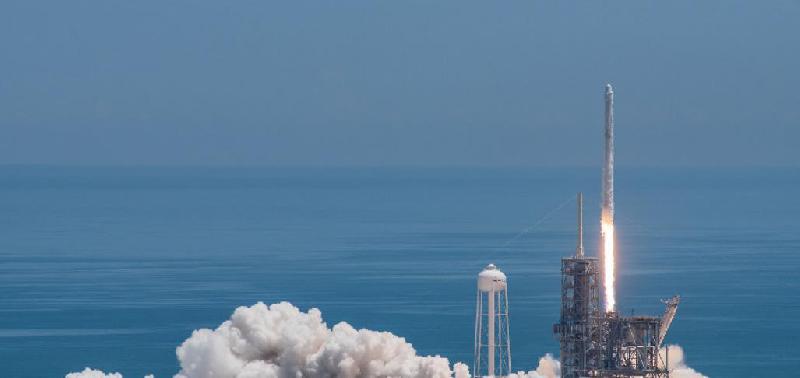
LOS ANGELES, March 3 (Xinhua) -- American spacecraft Crew Dragon successfully docked with the International Space Station (ISS) on Sunday for its unmanned debut flight.
After making 18 orbits of Earth since its launch, the spacecraft of U.S. private spaceflight company SpaceX successfully attached to the ISS via "soft capture" at 5:51 a.m. Eastern Time (1051 GMT).
As the spacecraft approached the ISS, it demonstrated its automated control and maneuvering capabilities by arriving in place at about 150 meters away from the orbital laboratory, then reversing course and backing away from the station to 180 meters before the final docking sequence from about 20 meters away, according to NASA.
It is the first autonomous docking of any U.S. spacecraft to the ISS. The Crew Dragon used the station's new international docking adapter for the first time since astronauts installed it during a spacewalk in August 2016.
Flight computers guided the craft directly into a docking port, unlike previous cargo Dragon spacecraft that have been attached to the space station after capture by a robotic arm.
Aboard the ISS, NASA astronaut Anne McClain, Canadian astronaut David Saint-Jacques and Russian cosmonaut and Expedition 58 commander Oleg Kononenko opened the hatch between the Crew Dragon and the orbital laboratory at 8:07 a.m. Eastern Time (1307 GMT).
The crew members opened the hatch to Crew Dragon following standard leak checks and pressurization. Later they held a welcome ceremony for the craft.
"Welcome to a new era in human spaceflight," said McClain in a NASA live webcast.
The spacecraft will remain docked to the ISS for five days before departing on March 8. After undocking from the space station, Crew Dragon will begin its descent to Earth.
Rocketed into orbit early Saturday, the capsule carried a test dummy named Ripley -- after the heroine from the "Alien" movies -- and 400 pounds (about 181 kg) of supplies and experiments to the ISS, including bulk overwrap bags containing more than 1,000 food and drink packages for the crew.
Ripley was outfitted with sensors to provide data about potential effects on future astronauts who will travel in the Crew Dragon.
The demonstration mission, called Demo-1, is the first flight test of a space system designed for humans built and operated by a U.S. commercial company through a public-private partnership.
The mission also marks a significant step toward to the return of human launches to the space station on a U.S.-built spacecraft from U.S. soil since 2011.


















Latest comments